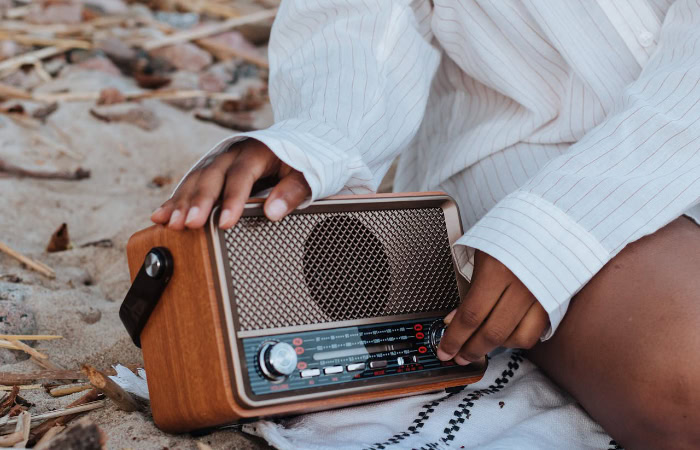How to Identify Music by Sound: Never Miss a Beat

Music has an uncanny ability to evoke emotions and create lasting memories. It’s no wonder that when we hear a captivating song, we often find ourselves eager to learn more about it. However, identifying music by sound alone can be a frustrating experience, especially when the song title or artist remains elusive.
Fortunately, with the rise of advanced music recognition technologies, unraveling the mystery behind unknown tunes has become more accessible than ever. From dedicated apps to voice assistants, a variety of tools now exist to help music enthusiasts quickly and accurately identify songs.
Popular Music Recognition Apps
In the world of music identification, two apps stand out from the crowd: Shazam and SoundHound. These powerful tools have revolutionized the way we discover and engage with music, making it easier than ever to identify songs by sound alone.
Shazam: Features and Usage
Shazam, one of the most well-known music recognition apps, has been a go-to solution for music lovers since its launch in 2002. With a simple tap, Shazam listens to the music playing around you and quickly identifies the song title and artist.
The app’s user-friendly interface and extensive database make it a breeze to use, even in noisy environments.
Beyond its core identification feature, Shazam offers a range of additional functionalities. Users can explore song lyrics, view music videos, and access artist biographies directly within the app.
Shazam also allows users to create personal libraries of identified songs, making it easy to keep track of newfound favorites. The app’s integration with popular streaming services like Apple Music and Spotify enables seamless playlist creation and song purchasing.
SoundHound: Unique Capabilities
While Shazam may be the most recognizable name in music recognition, SoundHound has carved out its own niche with a set of unique capabilities. In addition to identifying songs by audio, SoundHound allows users to hum, whistle, or sing a melody to find a match.
This feature proves invaluable when you have a song stuck in your head but can’t recall the lyrics or artist.
SoundHound’s LiveLyrics feature sets it apart from other music recognition apps. As a song plays, the app displays synchronized lyrics in real-time, enhancing the listening experience and making it easier to sing along.
The app also offers a robust search function, enabling users to find songs by entering fragments of lyrics or descriptions.
One of SoundHound’s most impressive features is its ability to identify songs playing through headphones. By placing your device’s microphone near the headphone speaker, SoundHound can still accurately recognize the music, a feat that many other apps struggle with.
Voice Assistants and Music Identification

In recent years, voice assistants have become increasingly popular, offering a hands-free way to interact with our devices and access information. Alongside their ability to set reminders, answer questions, and control smart home devices, voice assistants have also emerged as powerful tools for music identification.
Using Siri on Apple Devices
Apple’s voice assistant, Siri, has integrated music identification capabilities powered by Shazam. To use this feature, simply activate Siri by saying “Hey Siri” or pressing and holding the home button (on older devices) or the side button (on newer devices).
Then, ask Siri, “What song is playing?” or “Name this tune.” Siri will listen to the music and provide you with the song title and artist information.
One of the advantages of using Siri for music identification is its seamless integration with Apple Music. If you have an Apple Music subscription, you can easily add the identified song to your library or playlist.
Siri can also provide additional information about the song, such as the album it appears on or the year it was released.
Google Assistant’s Song Recognition Feature
Google Assistant, the voice assistant found on Android devices and Google Home smart speakers, offers a built-in song recognition feature. To activate it, simply say “Hey Google, what’s this song?” or “Hey Google, identify this song.”
Google Assistant will listen to the music playing around you and quickly provide the song title and artist.
In addition to identifying songs, Google Assistant can also help you find more information about the music. You can ask questions like “When was this song released?” or “What album is this song from?” Google Assistant will search its vast knowledge base and provide you with the relevant details.
Alexa’s Music Identification Capabilities
Amazon’s voice assistant, Alexa, also offers music identification features. To use this capability, simply say “Alexa, what song is this?” or “Alexa, name this tune.” Alexa will listen to the music and respond with the song title and artist.
One unique aspect of Alexa’s music identification is its ability to save identified songs to your Amazon Music library. If you have an Amazon Music subscription, you can easily add the song to your collection or create a new playlist based on the identified track.
How Music Recognition Technology Works

Have you ever wondered how music recognition apps and voice assistants can identify songs so quickly and accurately? Behind the scenes, these tools rely on sophisticated technology that analyzes audio signals and matches them against vast databases of known songs.
Audio Fingerprinting Explained
At the core of music recognition technology lies a concept called audio fingerprinting. Just as human fingerprints are unique and can be used to identify individuals, audio fingerprints are distinct representations of songs that can be used to identify them.
To create an audio fingerprint, the music recognition software analyzes the acoustic properties of a song, such as its frequency, pitch, and tempo. It then generates a compact digital signature that captures the song’s unique characteristics.
This fingerprint is much smaller than the original audio file, making it efficient for storage and comparison purposes.
Matching Algorithms and Database Comparisons
Once an audio fingerprint has been created for the song you want to identify, the music recognition software compares it against a massive database of known songs. This database contains audio fingerprints for millions of tracks from various artists and genres.
Sophisticated matching algorithms are used to find the closest match between the fingerprint of the unknown song and the fingerprints stored in the database. These algorithms take into account factors such as background noise, distortion, and variations in tempo or pitch.
When a match is found, the software retrieves the corresponding song information from the database, including the title, artist, album, and release year. This information is then presented to the user through the app or voice assistant interface.
Accuracy and Limitations of Current Technology
Music recognition technology has come a long way in recent years, with many apps and voice assistants boasting high accuracy rates. However, it’s important to understand that no system is perfect, and there are certain limitations to current technology.
Factors that can affect the accuracy of music recognition include:
- Background noise: Excessive background noise or conversations can interfere with the audio analysis process, making it harder to identify the song accurately.
- Song length: Very short snippets of songs may not provide enough information for the software to generate a reliable fingerprint.
- Live performances or remixes: Live versions of songs or remixes that deviate significantly from the original recording may not be recognized accurately.
- Obscure or niche tracks: Songs from lesser-known artists or niche genres may not be present in the recognition software’s database, limiting its ability to identify them.
Despite these limitations, music recognition technology continues to evolve and improve. As databases expand and algorithms become more sophisticated, the accuracy and coverage of these tools will only get better over time.
Alternative Methods for Song Identification

While music recognition apps and voice assistants are incredibly convenient, there may be times when they fail to identify a song accurately. In such cases, alternative methods for song identification can come to the rescue.
Humming or Singing Melodies to Apps
Have you ever had a song stuck in your head, but you can’t remember the lyrics or artist? Fortunately, some music recognition apps, like SoundHound, allow you to hum or sing the melody directly into the app.
These apps use advanced algorithms to analyze the pitch and rhythm of your humming and compare it against their database of songs.
To use this feature, simply open the app and tap the “Hum” or “Sing” button. Start humming or singing the melody of the song you want to identify, and the app will do its best to match it with known tracks.
While the accuracy of this method may vary depending on your singing abilities and the complexity of the song, it can be a useful tool when other identification methods fail.
Searching with Lyrics or Song Snippets
If you remember a few words or phrases from the song, searching for lyrics online can be an effective way to identify it. Websites like Genius and AZLyrics allow you to enter song lyrics and search for matches.
When searching for lyrics, try to choose distinctive phrases or lines that are likely to be unique to the song. Avoid common words or phrases that may appear in multiple songs.
If you’re unsure about the exact lyrics, you can also try searching for keywords or themes related to the song’s content.
Once you find a match, you’ll typically be presented with the song title, artist, and additional information such as the album and release year. Some lyric websites even provide links to listen to the song or watch its music video.
Leveraging Online Communities and Forums
When all else fails, turning to online communities and forums can be a valuable resource for song identification. Websites like Reddit, Quora, and music-specific forums bring together music enthusiasts from around the world who are eager to help others identify songs.
To leverage these communities, create a post describing the song you’re trying to identify. Provide as much information as possible, including any lyrics you remember, the genre or style of the music, and where you heard it (e.g., in a movie, on the radio, at a specific event).
If you have a recording or clip of the song, you can also include a link to it in your post.
Be patient and respectful when engaging with these communities. Remember that the people helping you are volunteers who share your passion for music.
If someone successfully identifies your song, be sure to thank them and consider paying it forward by helping others in the future.
Conclusion
Music identification has become an essential tool for music lovers in today’s fast-paced world. With the rise of powerful apps like Shazam and SoundHound, along with the integration of song recognition capabilities in voice assistants such as Siri, Google Assistant, and Alexa, unraveling the mystery behind unknown tunes has never been easier.
These technologies rely on advanced audio fingerprinting, matching algorithms, and extensive databases to provide accurate and swift results.
However, it’s important to recognize that these tools, while impressive, have their limitations. Background noise, short song snippets, live performances, and obscure tracks can pose challenges for even the most sophisticated music recognition systems.
In such cases, alternative methods like humming melodies to apps, searching for lyrics online, and engaging with music-focused communities can prove invaluable in the quest to identify songs.
Regardless of the method you choose, the ability to identify music by sound opens up a world of possibilities. It allows you to discover new artists, rediscover old favorites, and expand your musical horizons.
So, the next time you find yourself captivated by an unfamiliar melody, remember that you have a powerful arsenal of tools and resources at your disposal. Whether you opt for a dedicated app, enlist the help of a voice assistant, or turn to the collective knowledge of online communities, you’re well-equipped to uncover the identity of any song that catches your ear.
Embrace the joy of musical discovery and never let a captivating tune remain nameless again.


